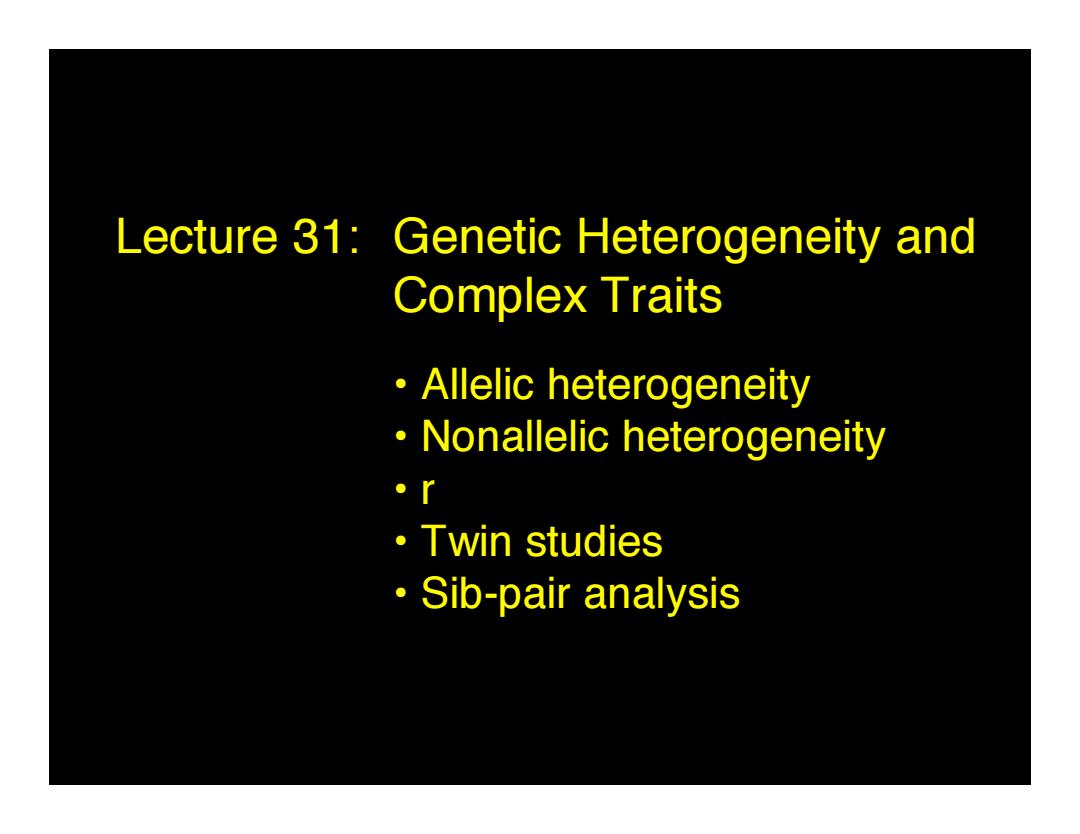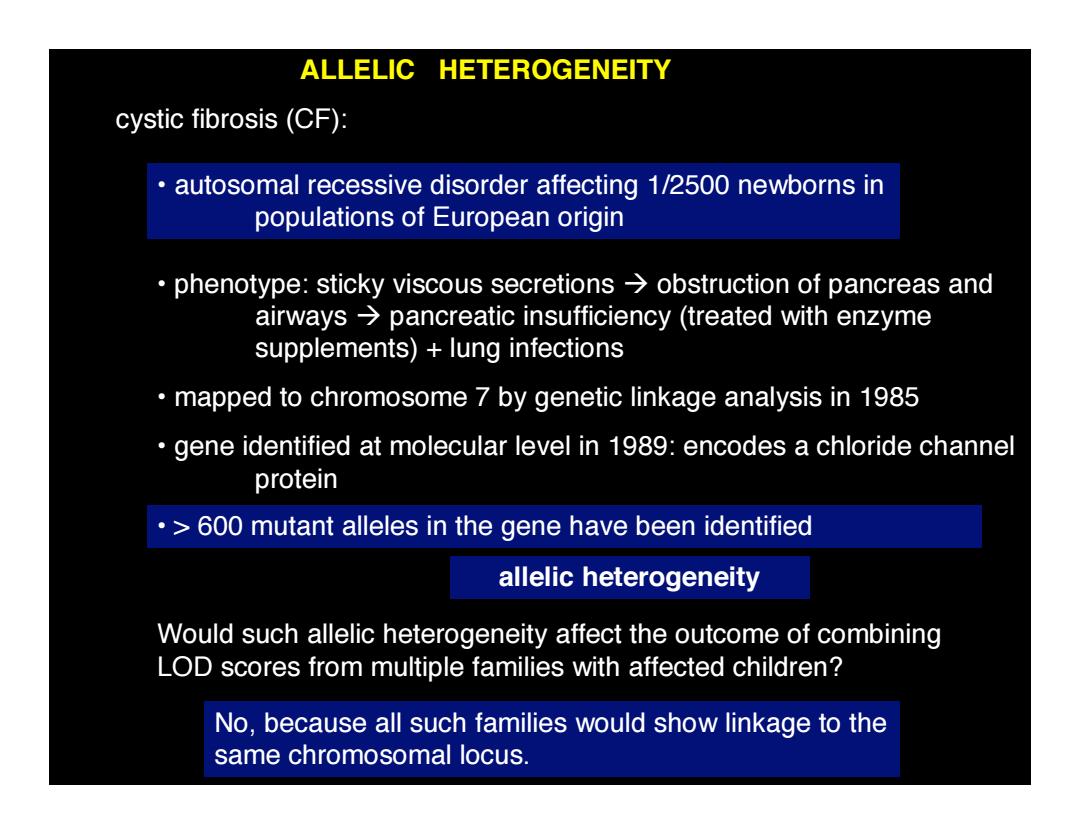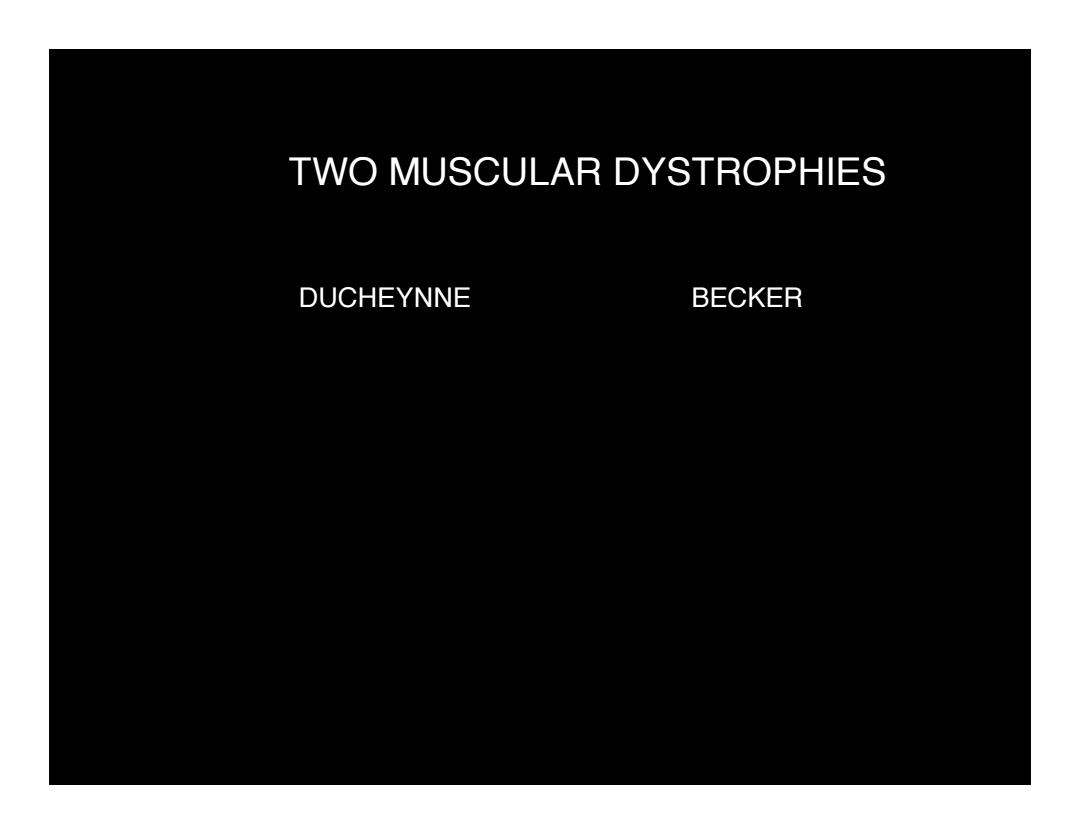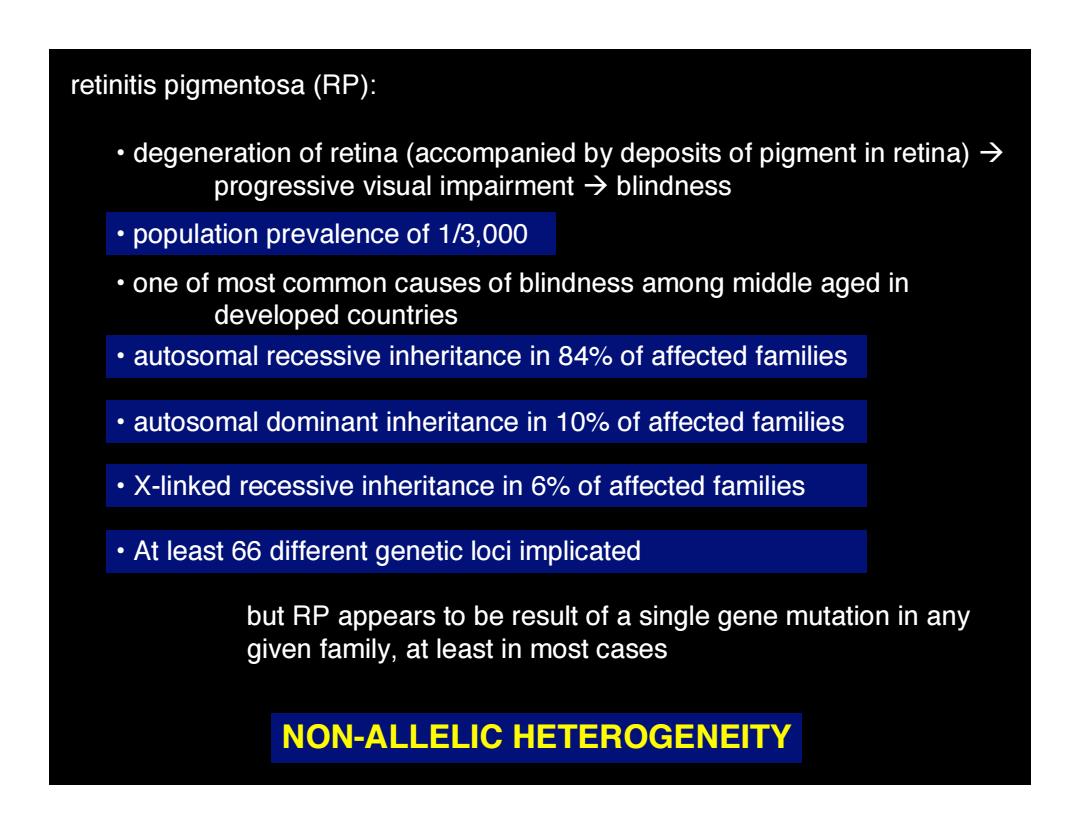
Lecture 31:Genetic Heterogeneity and Complex Traits Allelic heterogeneity Nonallelic heterogeneity 'r ·Twin studies Sib-pair analysis
Lecture 31: Genetic Heterogeneity and Complex Traits • Allelic heterogeneity • Nonallelic heterogeneity • r • Twin studies • Sib-pair analysis

Each of the heritable human traits that we have discussed in recent weeks is monogenic invariably caused by mutation in the same gene. Each of these traits was quite straightforward from a Mendelian perspective: Sickle cell disease:autosomal recessive Phenylketonuria:autosomal recessive Huntington's disease:autosomal dominant genetic homogeneity all affected individuals have the same mutation in the same gene
Each of the heritable human traits that we have discussed in recent weeks is monogenic Each of these traits was quite straightforward from a Mendelian perspective: invariably caused by mutation in the same gene. Sickle cell disease: autosomal recessive Phenylketonuria: autosomal recessive Huntington's disease: autosomal dominant genetic homogeneity all affected individuals have the same mutation in the same gene

ALLELIC HETEROGENEITY cystic fibrosis (CF): autosomal recessive disorder affecting 1/2500 newborns in populations of European origin phenotype:sticky viscous secretions obstruction of pancreas and airways pancreatic insufficiency (treated with enzyme supplements)+lung infections mapped to chromosome 7 by genetic linkage analysis in 1985 gene identified at molecular level in 1989:encodes a chloride channel protein 600 mutant alleles in the gene have been identified allelic heterogeneity Would such allelic heterogeneity affect the outcome of combining LOD scores from multiple families with affected children? No,because all such families would show linkage to the same chromosomal locus
ALLELIC HETEROGENEITY cystic fibrosis (CF): • autosomal recessive disorder affecting 1/2500 newborns in populations of European origin • phenotype: sticky viscous secretions obstruction of pancreas and airways pancreatic insufficiency (treated with enzyme supplements) + lung infections • mapped to chromosome 7 by genetic linkage analysis in 1985 • gene identified at molecular level in 1989: encodes a chloride channel protein allelic heterogeneity Would such allelic heterogeneity affect the outcome of combining LOD scores from multiple families with affected children? No, because all such families would show linkage to the same chromosomal locus. • > 600 mutant alleles in the gene have been identified

TWO MUSCULAR DYSTROPHIES DUCHEYNNE BECKER
DUCHEYNNE BECKER TWO MUSCULAR DYSTROPHIES

retinitis pigmentosa(RP): degeneration of retina (accompanied by deposits of pigment in retina)> progressive visual impairment blindness population prevalence of 1/3,000 one of most common causes of blindness among middle aged in developed countries autosomal recessive inheritance in 84%of affected families autosomal dominant inheritance in 10%of affected families X-linked recessive inheritance in 6%of affected families At least 66 different genetic loci implicated but RP appears to be result of a single gene mutation in any given family,at least in most cases NON-ALLELIC HETEROGENEITY
retinitis pigmentosa (RP): • degeneration of retina (accompanied by deposits of pigment in retina) progressive visual impairment blindness • population prevalence of 1/3,000 • one of most common causes of blindness among middle aged in developed countries • autosomal recessive inheritance in 84% of affected families • autosomal dominant inheritance in 10% of affected families • X-linked recessive inheritance in 6% of affected families • At least 66 different genetic loci implicated but RP appears to be result of a single gene mutation in any given family, at least in most cases NON-ALLELIC HETEROGENEITY